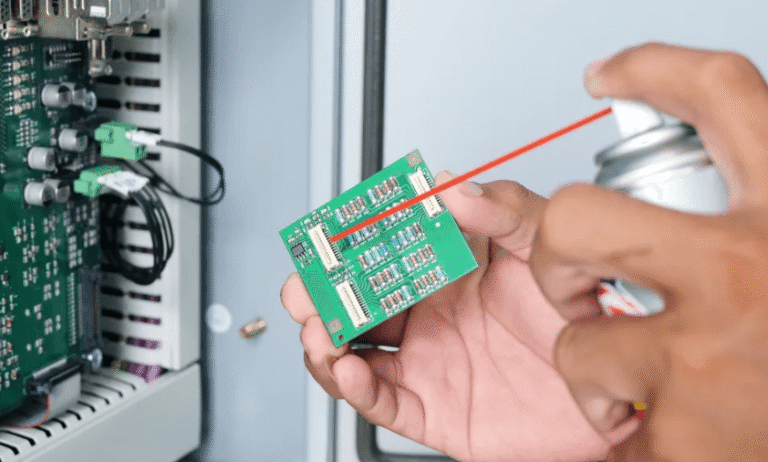The Role of Energy Pipelines in Powering a Sustainable Future
Energy pipelines are among the most important infrastructures in the modern world. They provide the backbone of global energy systems, transporting oil, gas, and increasingly renewable fuels over vast distances. In many ways, pipelines are the invisible lifelines that keep economies moving, industries operating, and households functioning.
In the UK and worldwide, conversations about sustainability and the energy transition are also bringing energy pipelines into sharper focus. Not only do they deliver traditional fuels, but they are now being adapted to carry renewable energy carriers such as hydrogen and to support carbon capture and storage initiatives. Understanding the purpose, benefits, challenges, and evolving role of energy pipelines helps highlight why they remain essential in both today’s and tomorrow’s energy landscapes.
What Is an Energy Pipeline
An energy pipeline is a system of underground or overground pipes designed to transport energy resources. These can include crude oil, natural gas, refined petroleum products, hydrogen, or even carbon dioxide captured from industrial processes.
Unlike trucks, ships, or railways that move fuel in batches, pipelines operate continuously. This uninterrupted flow means energy can be delivered directly from production sites to refineries, power stations, or storage facilities with minimal delays. As a result, pipelines are considered one of the safest, most reliable, and most efficient energy transport methods available.
Why Energy Pipelines Are Vital
Reliable Energy Delivery
Energy demand is constant, and pipelines provide a steady supply of resources to meet it. From heating homes in winter to fueling industries, pipelines ensure that energy arrives where it is needed, when it is needed.
Cost-Effective Transport
Compared to road or maritime transport, pipelines offer lower long-term costs. Once installed, pipelines can operate for decades, carrying huge volumes of fuel with relatively low operational expenses.
Enhanced Safety
Modern energy pipelines are equipped with advanced monitoring technology such as pressure sensors, leak detection systems, and remote shut-off valves. These features greatly reduce risks, making pipelines a safer option than other transportation methods that rely on manual oversight.
Economic Growth
Energy pipelines support national and global economies by ensuring businesses have access to reliable energy. From manufacturing plants to small businesses, pipelines help maintain economic stability.
See also: Can Tech Solve the Climate Crisis?
Types of Energy Pipelines
Energy pipelines are not all the same. They vary in design, size, and purpose depending on the type of energy being transported.
Crude Oil Pipelines
These pipelines carry crude oil from production fields to refineries. They are often large in diameter and capable of transporting vast volumes of oil across hundreds of miles.
Natural Gas Pipelines
Among the most widespread, these pipelines deliver natural gas used for electricity generation, heating, and industrial processes. Distribution networks connect directly to households and businesses.
Refined Product Pipelines
After crude oil is processed in refineries, refined products such as petrol, diesel, and jet fuel are moved through specialized pipelines to storage facilities and distribution centers.
Hydrogen Pipelines
As hydrogen gains recognition as a clean energy source, pipelines are being developed and adapted to safely carry it. Hydrogen has different physical properties than natural gas, requiring specialized materials and designs.
Carbon Dioxide Pipelines
Used in carbon capture and storage projects, these pipelines transport captured CO₂ to storage sites, often deep underground. This helps reduce greenhouse gas emissions from industries.
Multi-Product Pipelines
Some systems are capable of transporting multiple types of fuel. Careful planning and scheduling ensure that products remain separate within the same pipeline network.
How Energy Pipelines Work
Energy pipelines rely on pumping stations and compressors to move resources over long distances. Crude oil pipelines use pumping stations at intervals, while natural gas pipelines use compressor stations to maintain flow.
The pipes themselves are made from high-strength steel or modern composite materials designed to withstand pressure, environmental conditions, and corrosion. Protective coatings and monitoring systems further ensure durability and safety.
Energy Pipelines and Sustainability
The global shift toward cleaner energy has raised questions about the future of pipelines. While many assume pipelines only serve fossil fuels, the reality is that they are increasingly part of the sustainable energy transition.
Hydrogen Transport
Hydrogen pipelines will be central to building a hydrogen economy. By adapting existing gas infrastructure or developing new networks, countries can move hydrogen efficiently to power industries, transportation, and even households.
Supporting Carbon Capture
Carbon capture and storage (CCS) technologies rely on pipelines to move captured CO₂ from power plants and factories to safe geological storage sites. This process reduces the amount of carbon released into the atmosphere.
Renewable Integration
Pipelines also complement renewable energy sources like wind and solar. By transporting renewable-derived hydrogen or synthetic fuels, they provide solutions for storing and delivering energy when direct electricity supply may be inconsistent.
Challenges Facing Energy Pipelines
Despite their benefits, energy pipelines face several challenges that must be addressed to ensure long-term viability.
Environmental Concerns
Leaks or spills, though rare, can harm local ecosystems. Preventing such incidents requires strict regulation, regular inspections, and advanced monitoring systems.
Aging Infrastructure
Many pipelines in use today were built decades ago. Modernizing these systems is essential to handle new fuels and maintain safety standards.
Public Perception
Energy pipelines often generate debate among communities, environmental groups, and policymakers. Balancing energy needs with environmental protection is a key challenge.
Technical Barriers for Hydrogen
Hydrogen pipelines require specific materials to prevent leakage or embrittlement. Developing these technologies at scale is still in progress.
Global Examples of Energy Pipelines
Energy pipelines span continents and oceans, forming extensive networks.
- In North America, vast networks transport oil and gas from production regions to refineries and cities.
- In Europe, gas pipelines connect countries and play a critical role in regional energy security.
- In Asia, rapidly growing economies rely on expanding networks to meet demand.
The UK, while smaller in scale, maintains an extensive natural gas pipeline system that supplies energy to millions of homes and industries daily. These networks are also being studied for hydrogen conversion as part of the transition to clean energy.
The Role of Technology in Modern Pipelines
Advances in technology are reshaping how pipelines are designed and managed.
- Remote Monitoring: Sensors track flow, pressure, and temperature in real time.
- Artificial Intelligence: Predictive maintenance helps identify issues before they become serious.
- Smart Materials: New coatings and pipeline materials improve durability and reduce corrosion.
- Automation: Automated shut-off valves respond instantly to changes, increasing safety.
These innovations make pipelines more efficient and reduce environmental risks.
The Cost of Energy Pipelines
Constructing an energy pipeline requires significant investment. Costs depend on the length, diameter, and materials used. While initial expenses are high, pipelines provide long-term returns by operating for decades and transporting massive amounts of energy efficiently.
Operating costs are relatively low once pipelines are in place, which is one reason they remain economically attractive compared to alternatives.
Future Outlook for Energy Pipelines
As the energy transition accelerates, pipelines will continue to evolve. Some trends shaping the future include:
- Hydrogen Infrastructure: Expansion of hydrogen-ready pipelines to power clean energy economies.
- Decarbonization Projects: Growth of CO₂ pipelines for carbon capture and storage.
- Digital Pipelines: Increasing use of digital twins and advanced simulations to optimize design and performance.
- Sustainability Standards: Stricter regulations and certifications ensuring that pipelines align with environmental goals.
Far from becoming obsolete, pipelines are adapting to support a new energy era.
Final Thoughts
Energy pipelines are the lifelines of modern society, silently carrying the fuels and resources that power daily life. From crude oil and natural gas to emerging hydrogen and carbon dioxide networks, they provide the infrastructure needed for reliable energy delivery.
While challenges such as aging infrastructure and environmental concerns exist, advances in technology and sustainability initiatives are reshaping how pipelines function. Far from being limited to fossil fuels, pipelines are increasingly part of the solution for a cleaner, greener energy future.






